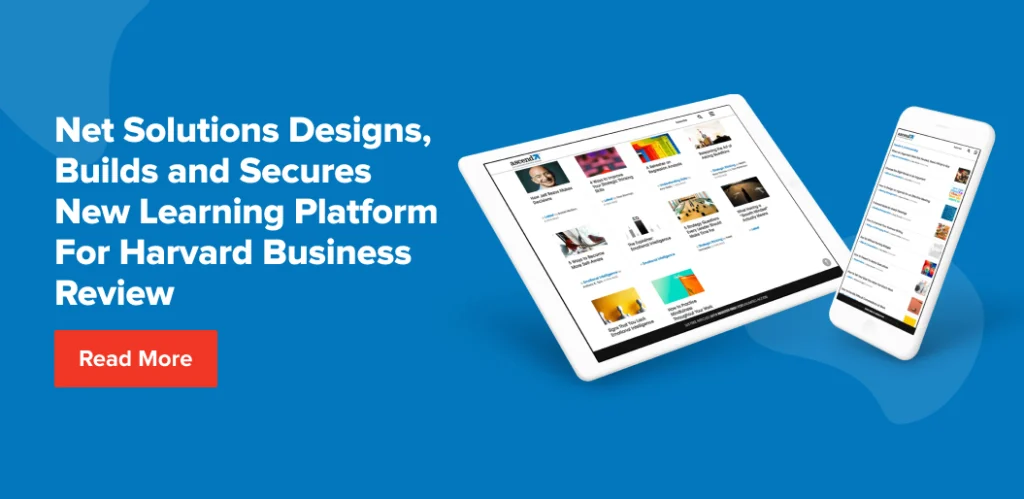B2B eCommerce is a fast-growing industry with a market cap of over $20 billion, with an annual growth rate of 19.7% through 2030. Whether the B2B seller is a more traditional supplier or retailer, a wholesaler or distributor, or a seller of a service or software (SaaS), there can be unique challenges in running an eCommerce business: it’s not uncommon for problems to arise in areas such as handling complex orders, system integration, or offering the right kind of personalization for B2B buyers.
Key Takeaways
- B2B challenges are changing as the market is changing
- Learn about the 9 biggest challenges B2B companies face and clear guidance on how to overcome each one
- The eCommerce technology stack you choose can make a critical difference in how easily you overcome challenges
B2B eCommerce is constantly evolving, but with the right strategy, you can stay ahead of the curve and distinguish your online store in a crowded market.
The Evolution of Today’s B2B Buyer
It was estimated that by the end of 2025, a staggering 80% of all B2B sales would happen online. Conducting bulk sales over the phone or in person was seldom a very efficient process, and now commerce leaders are reaping the rewards of an increasingly online world. B2B ecommerce is worth an estimated $7.7 trillion. B2B buyers are getting younger – over 70% are millennials – and this is a demographic that grew up online and expects a shopping experience that’s streamlined and personal. Distributors must meet their rising expectations: over 87% of buyers say they’d switch suppliers or pay more for a better buying experience.
In other words, eCommerce is becoming an integral part of the buying process for many B2B customers. But today’s B2B buyers also come with new expectations that have been impacted by their consumer experiences. B2B buyers want:
- Easy-to-use websites, with advanced search
- Robust self-service capabilities
- Ungated access to demos and product information
- Transparent pricing and delivery speed
- Flexible payment options
- A seamless experience across channels and devices
- Easy ways to engage with sales and customer support
- Personalized experiences across the website and portal
- Transparent third-party reviews (user reviews, forums, analyst rankings)
Buyers are expecting more from B2B companies with every passing year, and those companies that fail to meet their needs and struggle to keep up with the latest B2B eCommerce trends are likely to fall behind.
The Biggest Challenges B2B eCommerce Businesses Have to Address
While the benefits of B2B eCommerce are clear, getting B2B eCommerce right can be far more challenging than it is for B2C eCommerce due to the complexity of B2B businesses, which involve a greater reliance on tailored pricing and catalogs and more tailored capabilities in quoting and invoicing—all of which increases technical complexity and impacts the user experience. The good news is that you are armed with information to help you anticipate these challenges during your B2B eCommerce website development.
Read on to learn about nine of the most common B2B eCommerce challenges and how to overcome them:
1. Lack of personalized experience for buyers
A Gartner survey of 1,464 B2B buyers and consumers across North America, the U.K., Australia and New Zealand in November and December 2024 found that customers who experienced personalization in a recent purchase journey were 1.8x more likely to pay a premium. They experience strong outcomes:
- Search and product discovery
- Product recommendations
- Pricing
- Promotions
- Marketing (email, push notifications)
- Catalogs
- Self-service dashboards
Personalization requires that B2B sellers leverage customer behavioral and transactional data across systems and channels to tailor experiences and marketing strategies, an effort that often requires specialized software and/or AI.
The solution: eCommerce personalization and AI
Some enterprise eCommerce platforms are currently integrating personalization and AI (e.g. Adobe Commerce, Salesforce Commerce Cloud, SAP Commerce Cloud). For those that are not, leverage third-party software such as DynamicYield, Bloomreach, Insider, Ninetailed, and Algolia to create personalized shopping experiences, optimize search, and support marketing automation. Ideally your eCommerce platform has a pre-existing integration with one of these services or makes it easy to create your own integrations.
Still a challenge? If integrating with third-party software is not easy in your eCommerce platform, it may be time to consider re-platforming to a more modern headless eCommerce or composable commerce solution. We offer an in-depth guide to B2B eCommerce replatforming to help get you started.
2. Complex buying processes with many stakeholders
On average, there are 6-8 stakeholders involved in a B2B buying process, often leading to a protracted sales cycle. While this is not true for every type of B2B purchase, when buying processes are complex, this creates new requirements. Each kind of buyer may be looking for different kinds of information, from first identifying the problem to researching and understanding solutions, then aiding the purchase process. This procurement process can be heavily structured with requests for proposals (RFPs), contracts, purchase orders and invoices.
If information is hard to find or non-transparent, contact information is buried, RFPs are delayed, or self-service capabilities are not available, buyers may just move on.
The solution: design strategy + tools
Optimizing the buying process is as much about serving the right information at the right time as it is streamlining the purchase process with the right B2B website design strategy and tools (either features of your B2B platform or third-party tools).
Consider the following points:
- Offer differentiated catalogs and pricing (by industry, organization, business unit or specific buyer
- Optimize your website for easy navigation, aided by AI search & content filtering
- Reduce friction in the buying workflow with one-click checkouts, shopping lists, wish lists, saved information, and saved information
- Allow companies to assign roles to support role-based access to product information for easy reorders
- Ensure the site is optimized for mobile and omnichannel retailing, with information and settings saved across channels
- Ensure you have a decent amount of ungated information for early stakeholders (demos, product sheets, thought leadership)
- Allow customers to create accounts without a purchase, to ease friction in buying
- Leverage tools to gather information about users to help surface buying intent (e.g. Clearbit, Leadfeeder, Buyer Intent)
3. Difficulty finding the right products
B2B eCommerce product catalogs can be complicated, often featuring many different products and options for customization. Companies that don’t make it easy for buyers to search for the exact products and options they need will face major challenges when it comes to conversion and retention.
The solution: Customized catalogs & enhanced search
Offer a core catalog for the website, but with differentiated catalogs based on each vertical, organization, business unit or specific buyer in subsections of the website or on the internal buyer portal.
Choose an eCommerce solution that allows for a wide range of search factors, such as part numbers or product SKUs, keywords (including industry terms), product lines, and search by associated content. Surface upsell and cross-sell opportunities with product recommendations based on browsing and purchase intent.
Consider tools that support AI search, including Algolia, Elastic, Klevu or Coveo, or a more comprehensive Product Cloud tool such as Akeneo.
4. Lack of flexible payment and pricing options
B2B buyers require a wide range of payment methods, from purchase orders to buy-now-pay-later options. They might also require multiple approvals from different departments, along with customer-specific pricing based on negotiating rates and bulk-ordering plans.
The solution: An eCommerce platform designed for B2B sales
Out-of-the-box solutions for B2C eCommerce sites won’t have these capabilities because B2C shoppers usually pay with a credit card. If you need to handle complex transactions with flexible payments, tailored pricing, and a range of ordering options, you need to use a customizable platform designed for business-to-business sales.
If appropriate for your business, ensure the platform can support differentiated pricing models, allowing you to offer different prices based on volume, organization size, frequency of purchase, or even dynamic inputs such as market demand or competitor pricing. Where platform capabilities are not quite there, consider third-party tools such as Paddle or Zilliant.
5. Security and privacy concerns
Top-notch cybersecurity is essential for any company that plans to conduct business online, and this is especially true for B2B eCommerce companies that deal with sensitive payment and customer data.
The solution: Choose platforms with enterprise security features
Cybersecurity is immensely complicated, and the threats are always evolving. To meet the unique challenges of security and compliance, consider the pros and cons of different hosting options. In a self-hosting model, you would be entirely responsible for security, while in software-as-a-service (SaaS) or platform-as-a-service (PaaS), security becomes a shared responsibility with the eCommerce service and hosting partner. For some platforms, enterprise level security features are only available at the highest price tier.
Features to look for are:
- Certifications including PCI DSS, ISO 27001, GDPR, SOC 2
- Custom roles
- Multi-factor authentication
- Support for SSO
- Static webhook IPs
- Encryption
- Firewall
- Threat detection
- Backup (check frequency)
- Brute force protection
- Access logs
Security is always a shared responsibility, so understanding your role in securing information is critical. If you need assistance, hire a qualified partner to help manage risk.
6. Difficulties building trust and credibility
Trust is especially important in B2B sales, where purchasing can have significant impacts on the business and on the buyer’s personal career. In fact, 43% of B2B buyers make a “defensive decision” to avoid risk, going for the safest purchase. The solution for any B2B seller is to convey trust and be that safe choice.
The solution: Increase transparency & social proof
Forrester has outlined seven different elements of trust: competence, consistency, dependability, accountability, transparency, integrity, and empathy. Trust is built through every interaction a customer has with your organization, including the 27% of the purchasing decision that’s spent on research. You can influence tryst by:
- Providing accurate product descriptions
- Include transparent pricing and shipping costs & timelines
- Provide several ways to contact the organization (live chat, email, phone) with fast response times
- Include and solicit social proof in the form of online reviews (on site or third party sites such as G2) and case studies
- Work with analysts to be included in market reports
- Articulate company values through About Us and Career pages and through various reports (e.g. ESG reports)
- Demonstrate thought leadership with blog posts, whitepapers, articles in the news, LinkedIn, social media
- Trial incentives (e.g. reduced shipping, free trial) to reduce perceived risk
There are several tools that can assist in monitoring brand health (e.g. Quid), solicit reviews (e.g. Reviews.io)
7. Inefficient inventory and logistics management
B2B buyers place importance on inventory availability and the speed of fulfillment. When dealing with large numbers of SKUs, sales that span multiple channels, and localized selling, maintaining accurate inventory levels becomes increasingly difficult. While the goal is always to maintain a stock level to avoid customer dissatisfaction, overstock is also costly. Further, there are elements to shipping to different locations that also impact shipping time and cost (fulfillment centers, transportation).
The solution: Unified inventory management
Effective inventory management helps ensure that product availability meets demand, that inventory is managed in real-time across channels, and that logistics is able to handle bulk shipments or complex multi-location deliveries. For larger organizations, it also includes managing and shipping from multiple fulfillment centers to speed delivery, reduce shipping costs and reduce environmental impact.
There are ways that software can assist in managing inventory and logistics, including leveraging a “unified commerce” platform that helps unify the backend systems of your business (e.g. ERP, CRM, WMS) into one place, to make it easier to keep track of inventory and custom data in real time. Additionally, you can look for features or tools in demand forecasting, inventory optimization (e.g. NetSuite Inventory Management), automated reordering, and customer restock alerts.
8. Evolving shipping requirements
There are many factors that need to be considered to optimize a shipping strategy to meet customer expectations, including:
- The frequency of small vs bulk orders
- Existing contracts or agreements with carriers
- The demand for price and shipping transparency
- The demand for additional shipping options (e.g. expedited, consolidated, outside standard location)
- Demand for sustainable shipping practices that would offer the option to reduce the number of shipments or alter shipping materials
- Customs regulation and import/export requirements
The solution: Offer custom shipping options
Ensure your B2B eCommerce platform supports a flexible shipping strategy that allows you to quote or create checkout experiences with multiple shipping options (e.g. expedited, ground vs air) and offer custom pricing and shipping options based on customer or order size. To increase transparency, the ideal solution will provide shipping estimates before checkout.
Third-party tools that can assist in B2B shipping (and inventory management) include Freightcom, Oracle Order Management, Zoho.
9. Highly complex system integrations
All those integrations we mentioned throughout this post perform a vital function when they work together seamlessly, but that’s where things can get challenging. A traditional eCommerce solution is built to be a single tech stack, making it difficult to integrate with systems such as enterprise resource planning (ERP), product information management (PIM), customer relationship management (CRM), or to third-party systems.
Some eCommerce platforms have robust marketplaces of integrations, while others may require you to build custom integrations to support the systems you wish to use. B2B eCommerce solutions, particularly those that are primarily B2C solutions, are not designed to integrate with or support the complexity of all these necessary systems to run and scale a B2B business.
The solution: Choose a headless or composable CMS
Headless and composable CMS eCommerce solutions such as Adobe Commerce ( Magento), BigCommerce, and Contentful are designed to make it easy to integrate with existing systems, with robust native capabilities that understand how B2B businesses work. Look for a solution that offers robust APIs and pre-built integrations.
When it comes to custom integrations, particularly with legacy systems or complex data structures, an experienced eCommerce development partner can help you explore and develop your integrations, ensure data syncs accurately, and run extensive testing to ensure your system is designed to scale.
Looking to Optimize your B2B eCommerce Website?
Net Solutions has designed, built, improved, and maintained enterprise B2B eCommerce websites for industry leaders like Euro Car Parts and Bonds of London—and we’ve been building software for household names like IMG and the Harvard Business Review for nearly 25 years.
We can manage every stage of your B2B eCommerce website development and design, launch, and maintenance. We can also support your in-house team with key elements of your strategy, such as app modernization and replatforming, to ensure your tech stack can perform at the level you require to compete.
Contact us to transform your customers’ eCommerce experience through a cutting-edge, fully optimized B2B website.
SHARE THIS POST
Table of Contents
Related Resources
- AI in B2B eCommerce: Everything You Need to Know
- Top 14 B2B eCommerce Benefits in 2025
- The B2B eCommerce Catalog: Everything You Need to Know
- The Ultimate Guide to B2B Fashion eCommerce: Strategies, Trends, and Solutions
- 18 Must-Have B2B eCommerce Features To Look For in 2025
- Headless B2B eCommerce - How to Redefine Your Business
- B2B eCommerce Marketplaces: Your In-Depth Guide
- Top B2B eCommerce Metrics to Track for Success [2025]
- B2B Mobile eCommerce - A Comprehensive Guide
- Why Your Business Needs a B2B eCommerce Mobile App
- 11 Top B2B eCommerce Open Source Platforms for 2025 [With Real Reviews]
- B2B eCommerce Platform Costs: A Comprehensive Guide (2025)
- 12 Top B2B eCommerce Platforms for 2025 [With Real Reviews]
- B2B eCommerce Pricing Strategies: An In-Depth Guide
- Your In-Depth Guide to B2B eCommerce Replatforming
- Top 9 B2B eCommerce Trends to Watch in 2025
- B2B eCommerce UX: A Comprehensive Guide
- A Step-by-step Guide to B2B eCommerce Website Development
- 9 of the Best B2B eCommerce Website Examples in 2025



